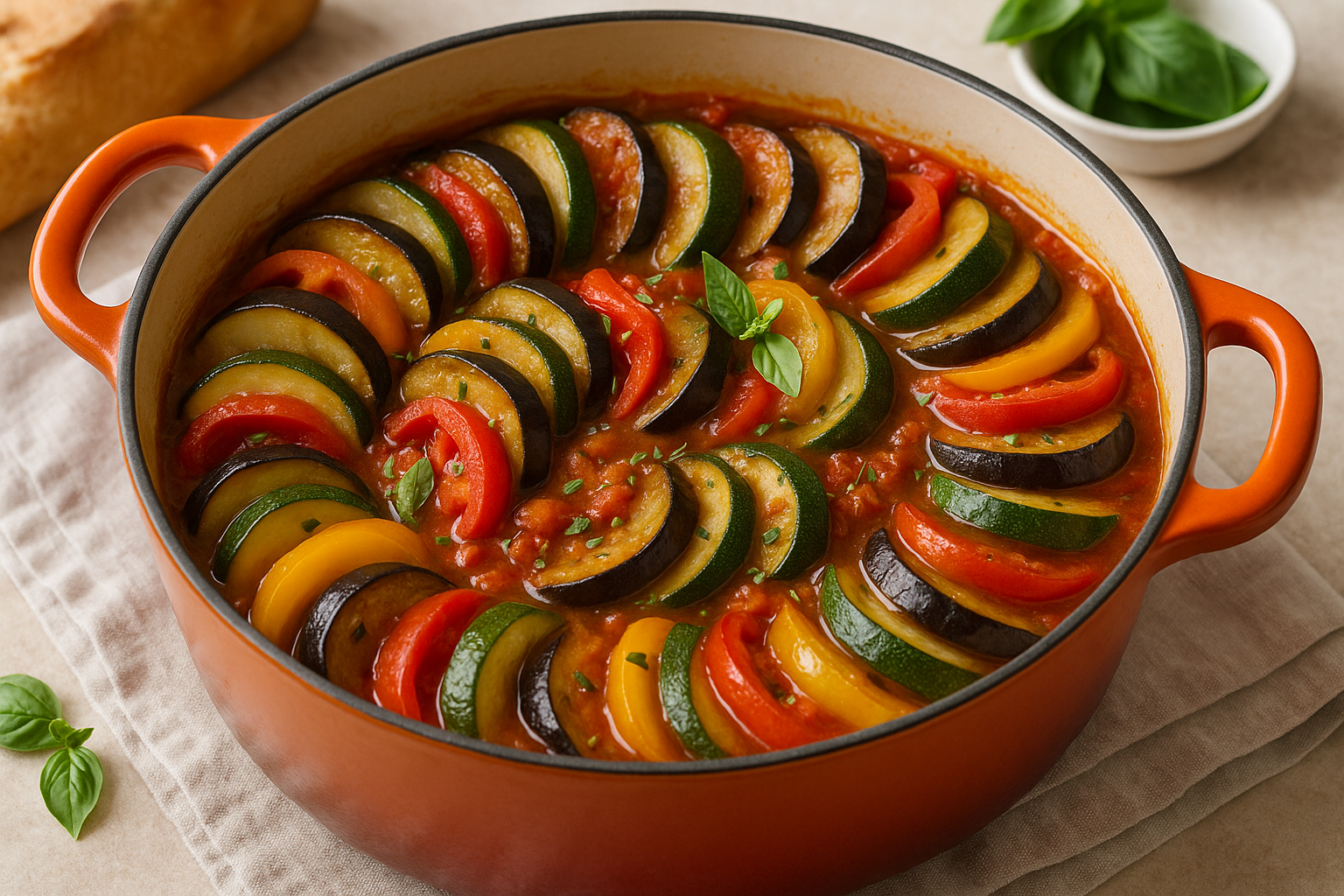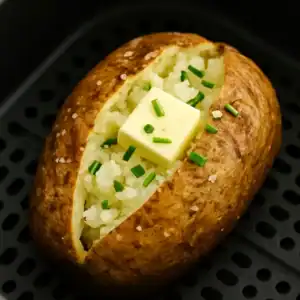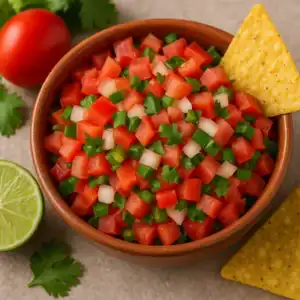Looking for a healthy and flavorful recipe that brings the taste of the Mediterranean to your kitchen? Try this authentic ratatouille recipe — a favorite of both home cooks and chefs around the world.
Ratatouille is a traditional French vegetable stew that comes from Nice, in the Provence region. Made with summer vegetables like zucchini, eggplant, tomatoes, and bell peppers, it’s not only delicious but also packed with nutrients. Best of all, it’s naturally vegan and gluten-free, making it perfect for nearly every diet.
In this article, we’ll show you a step-by-step method used by top chefs, ensuring your ratatouille turns out perfectly every time. Let’s get started!
🥘 What Is Ratatouille?
Ratatouille (pronounced ra-ta-too-ee) is more than just a colorful dish — it’s a celebration of simple, fresh ingredients. Each vegetable is cooked in a way that keeps its flavor and texture, then combined into a delicious stew.
There are two common cooking methods:
-
Layered and baked (used in the movie Ratatouille).
-
Stovetop stew, the traditional Provençal method preferred by chefs for flavor depth and ease.
In this article, we’ll use the stovetop stew method, which is widely used by chefs like Julia Child, Jacques Pépin, and Thomas Keller.
🧄 Ingredients (Serves 4–6)
-
1 medium eggplant, diced
-
2 medium zucchinis, sliced
-
1 large red bell pepper, chopped
-
1 large yellow bell pepper, chopped
-
1 medium onion, chopped
-
3–4 ripe tomatoes, diced (or 1 can of diced tomatoes)
-
2–3 cloves of garlic, minced
-
3 tbsp olive oil
-
1 tsp dried thyme
-
1 tsp herbes de Provence (optional)
-
Salt and pepper to taste
-
Fresh basil or parsley for garnish
🍳 How to Make Traditional Ratatouille
✅ Step 1: Prep the Vegetables
Wash and chop all your vegetables into bite-sized pieces. For best texture, cut them all about the same size.
✅ Step 2: Cook Each Vegetable Separately
This is key to professional-level ratatouille. Chefs often cook vegetables separately to avoid them becoming mushy. Here’s how:
-
Eggplant: Sauté in a bit of olive oil until golden and soft. Remove and set aside.
-
Zucchini: Do the same. Cook until lightly browned but not too soft.
-
Peppers and onions: Sauté until they start to soften and caramelize.
-
Garlic: Add garlic and cook for 30 seconds, being careful not to burn it.
✅ Step 3: Combine and Simmer
Add all the cooked vegetables to one pot. Add the diced tomatoes, thyme, herbes de Provence, salt, and pepper.
Let the mixture simmer uncovered on low heat for 30–40 minutes, stirring occasionally. The flavors will blend and the sauce will thicken.
👉 Note: According to chefs like Jacques Pépin, slow simmering helps deepen the flavor without overcooking the vegetables.
🥗 How to Serve Ratatouille
Ratatouille can be enjoyed hot or cold, as a main dish or a side.
Here are some great serving ideas:
-
With a crusty baguette or rice
-
Topped with a fried or poached egg
-
Alongside grilled chicken or fish
-
As a filling for crêpes or omelets
💡 Tips for Best Results
-
Use ripe vegetables. This makes a big difference in flavor.
-
Don’t skip cooking vegetables separately – this is the secret to good texture.
-
Use fresh herbs if possible for garnish.
-
Make it a day ahead – ratatouille tastes even better the next day!
❄️ Storage and Safety
Ratatouille is safe to store and reheat when done properly:
-
Store in an airtight container in the fridge for up to 4 days.
-
Reheat on the stove or in the microwave until steaming hot (above 74°C / 165°F).
-
For longer storage, freeze portions for up to 2 months.
🧘♀️ Healthy, Easy, Delicious
Ratatouille isn’t just a recipe — it’s a healthy habit. It’s low in calories, high in fiber, rich in antioxidants, and totally satisfying.
Whether you’re cooking for your family or impressing dinner guests, this classic French dish never disappoints. It’s easy, elegant, and always full of flavor.
📌 Final Thoughts
Now that you know how to make traditional ratatouille like a chef, it’s time to bring the flavors of southern France to your home. Enjoy it fresh, store it for later, or even turn it into a pasta sauce — the possibilities are endless!
Bon appétit!
Disclaimer: This recipe follows food safety guidelines used by professional chefs and is intended for educational purposes only. Always follow proper hygiene and cooking temperature practices in your kitchen.






